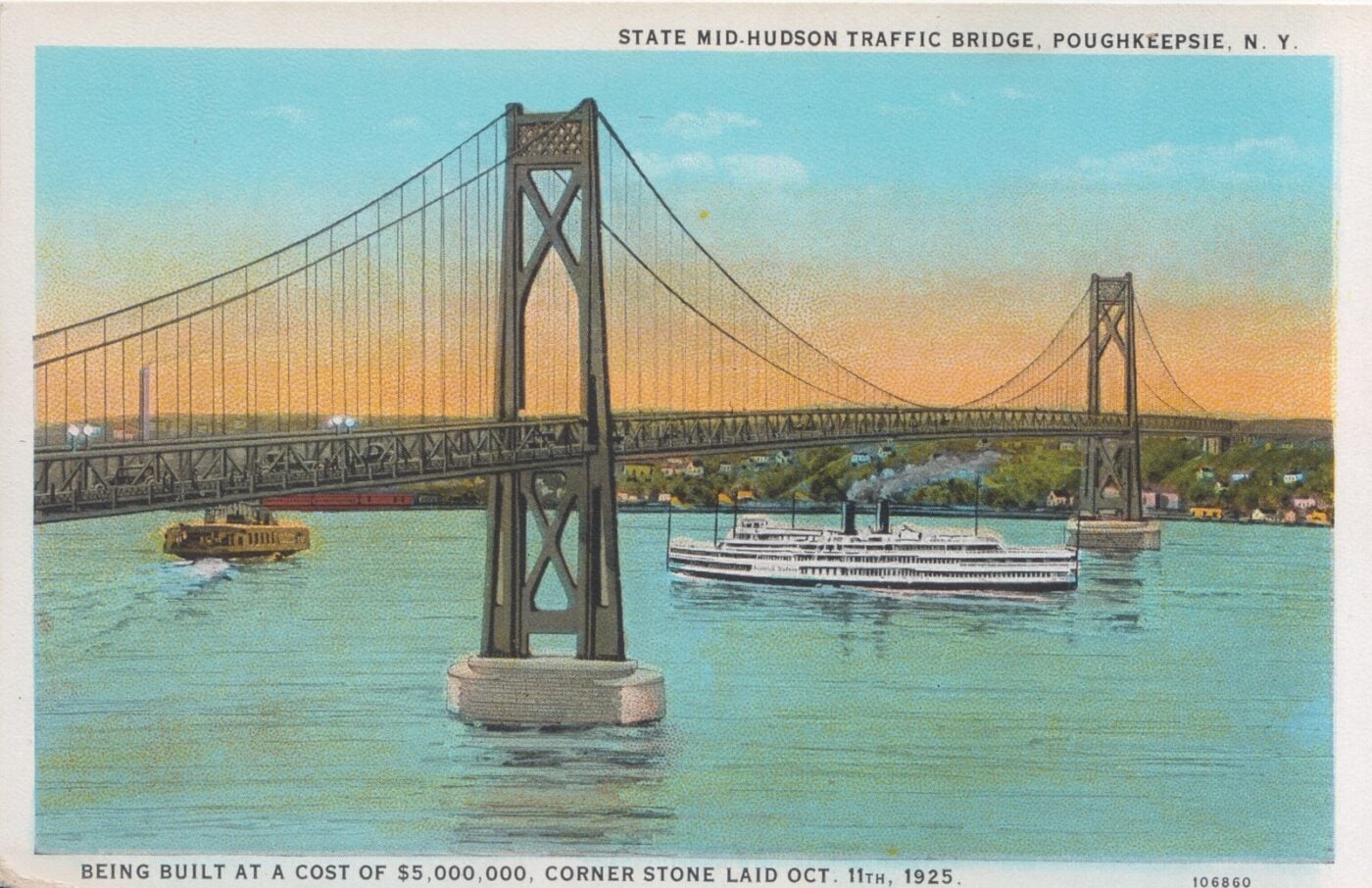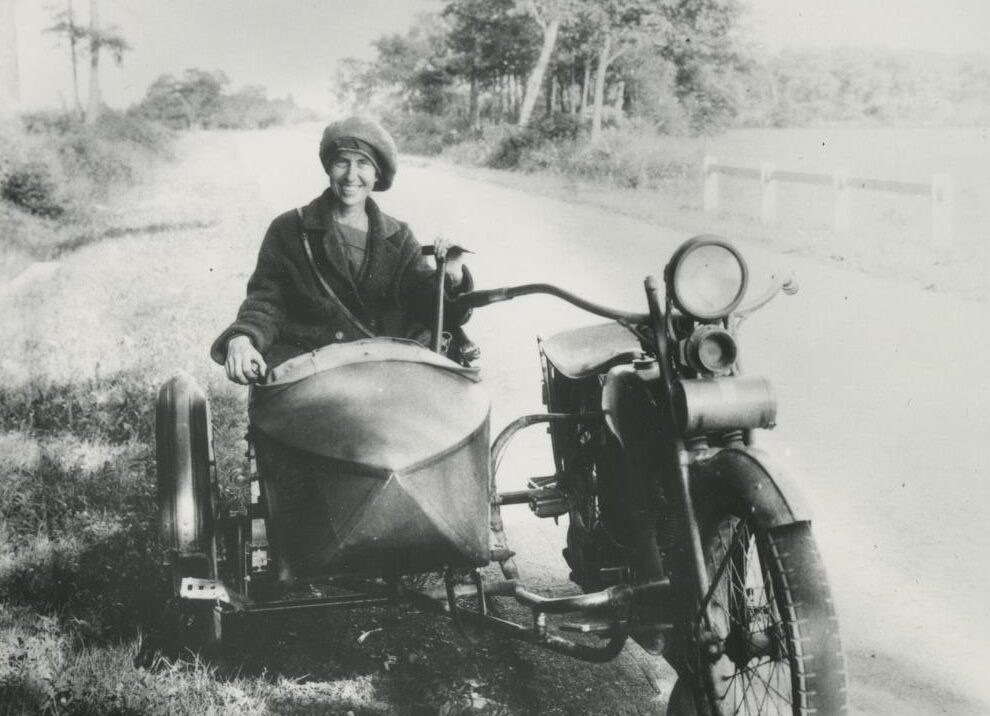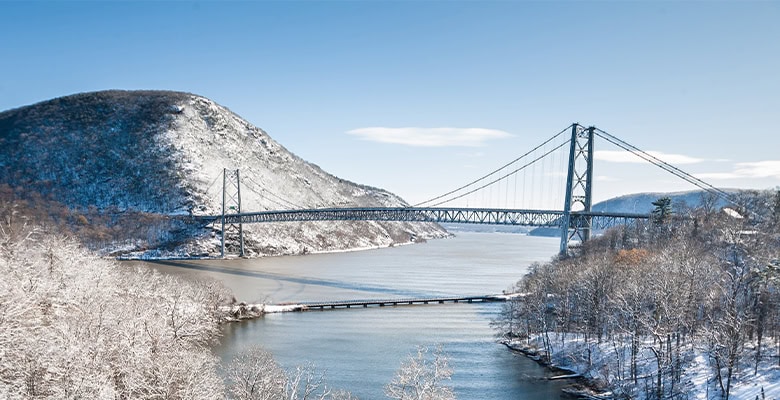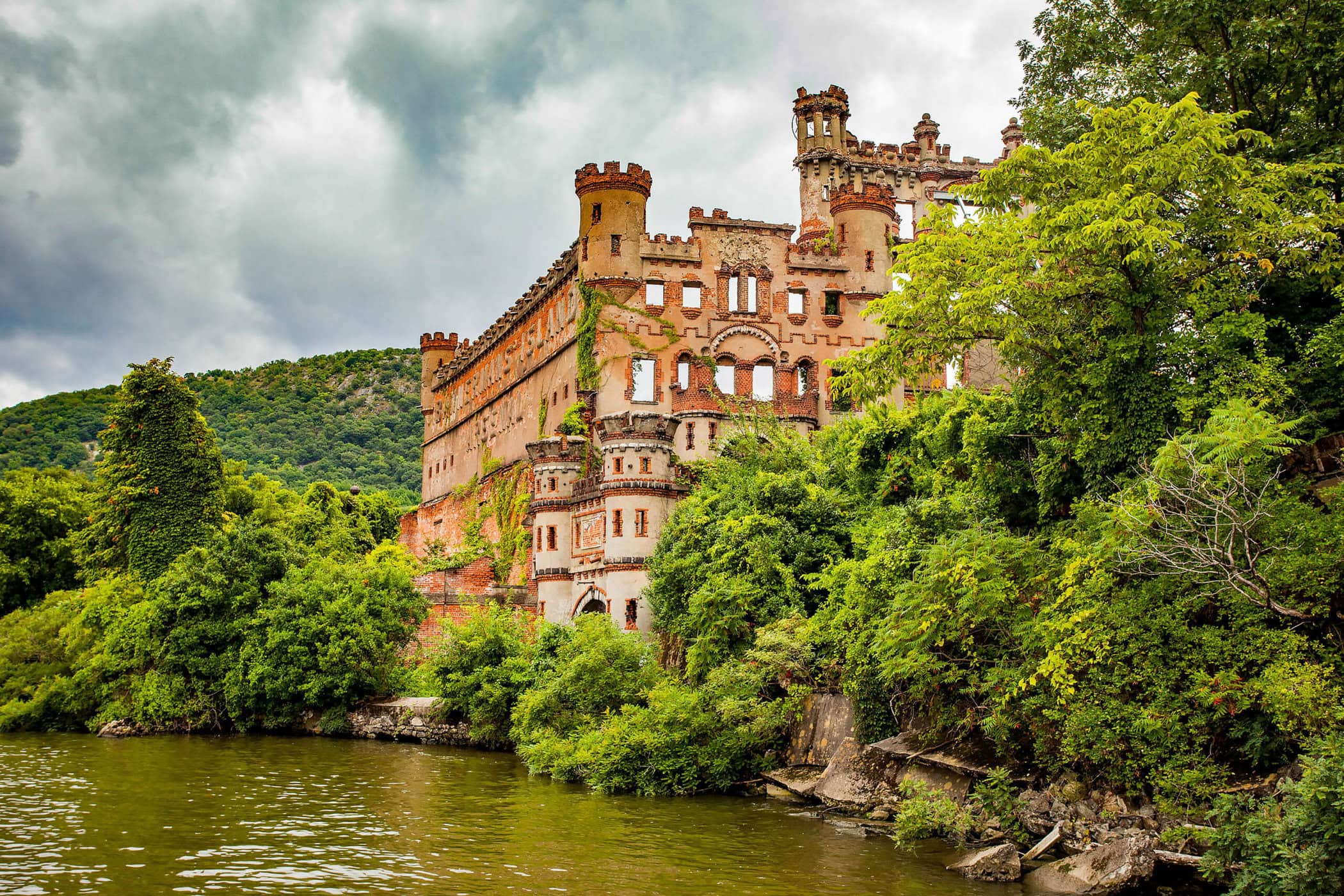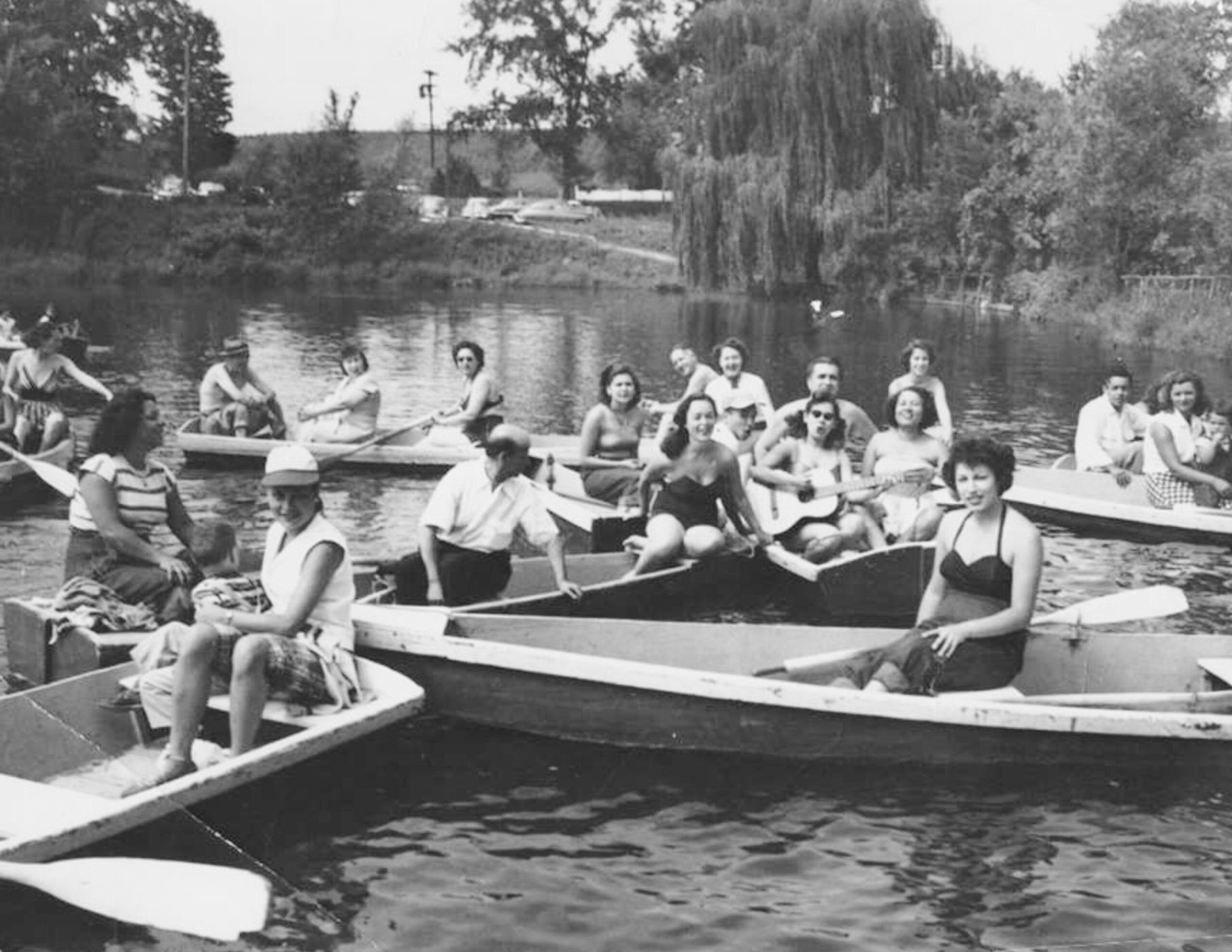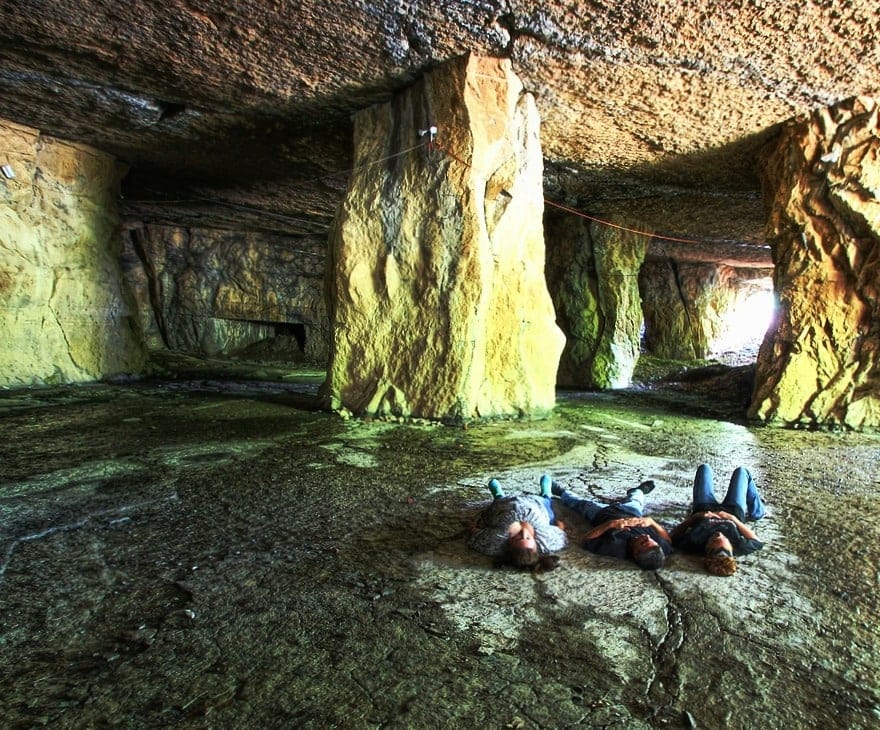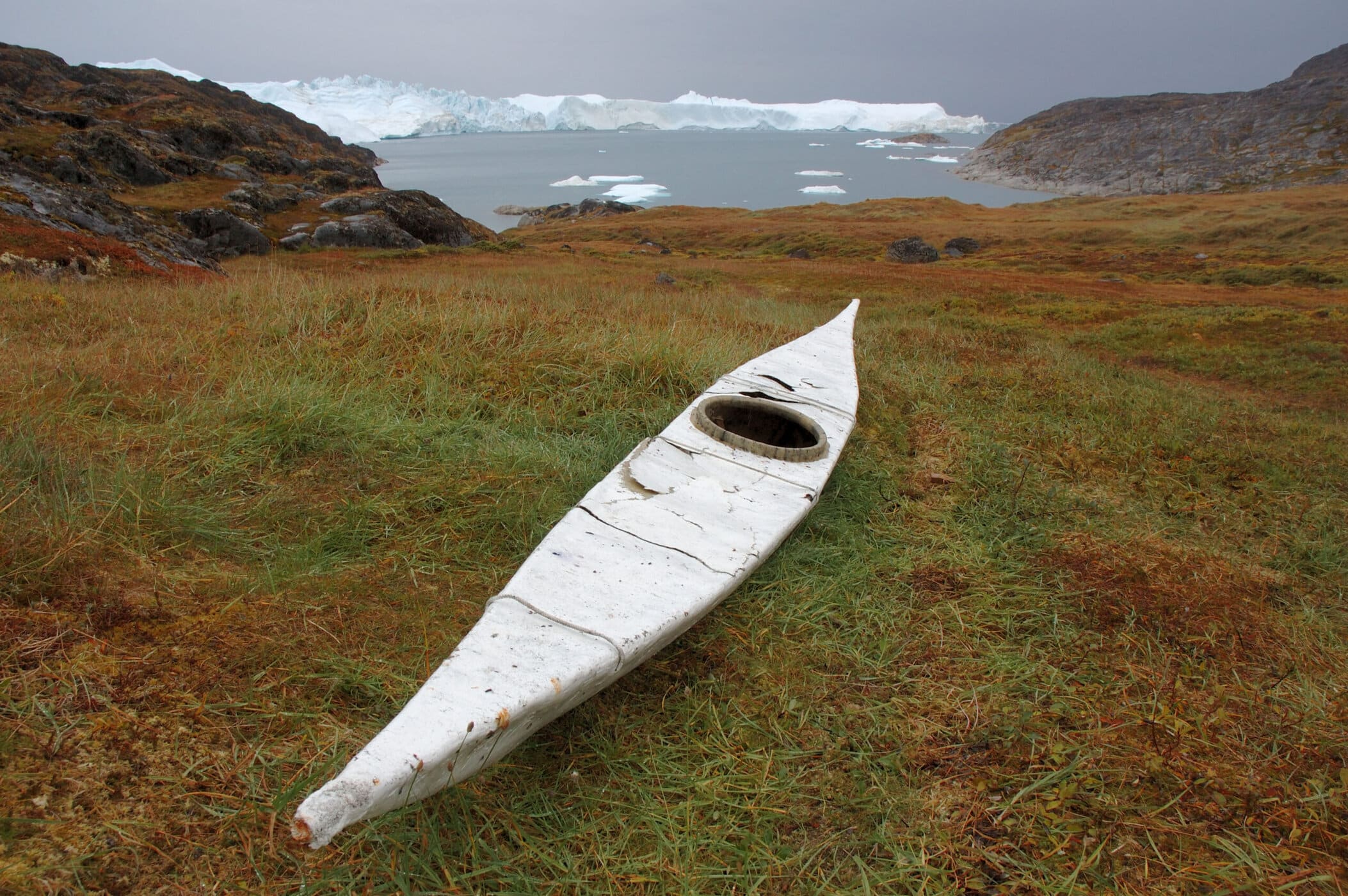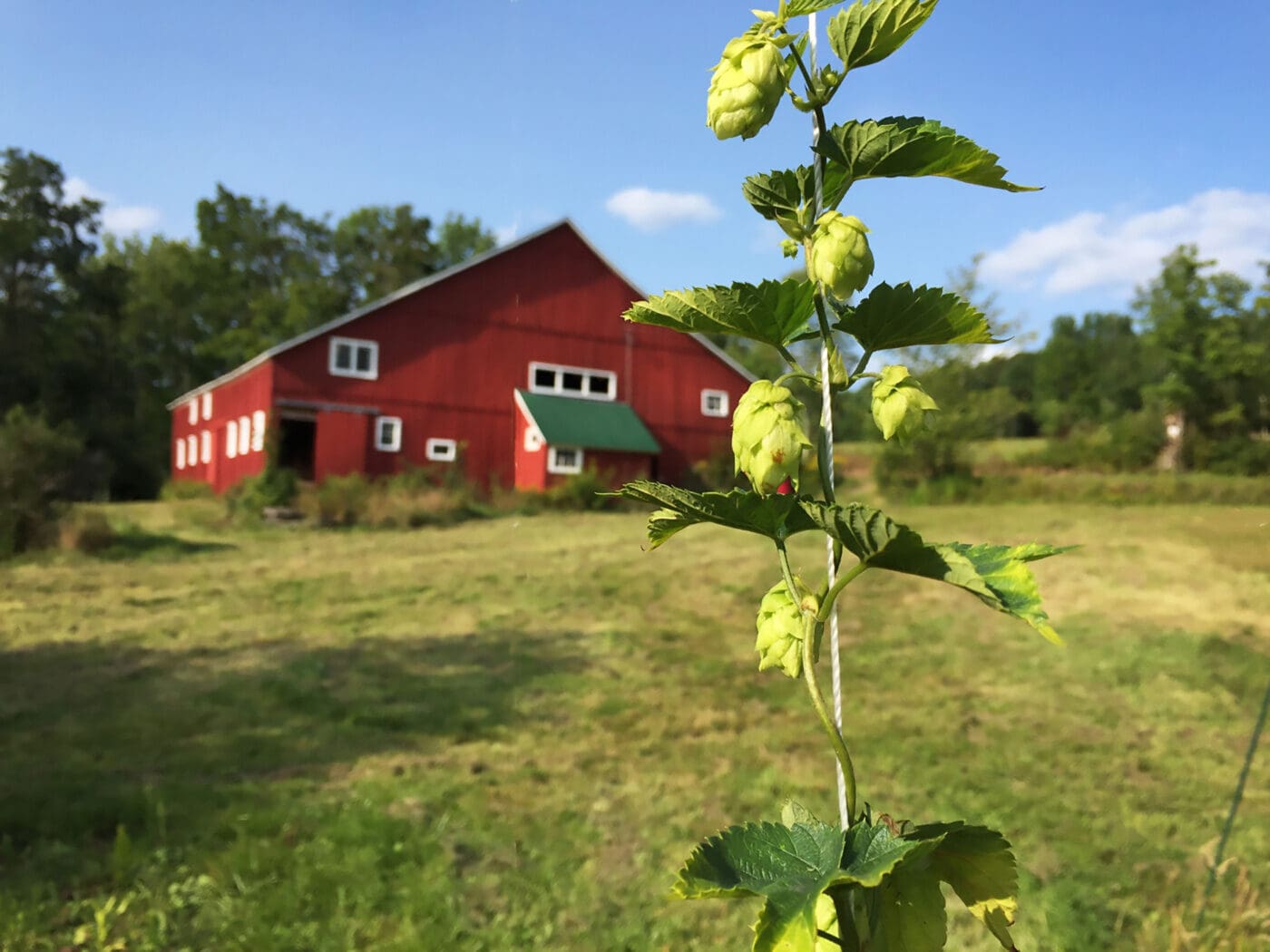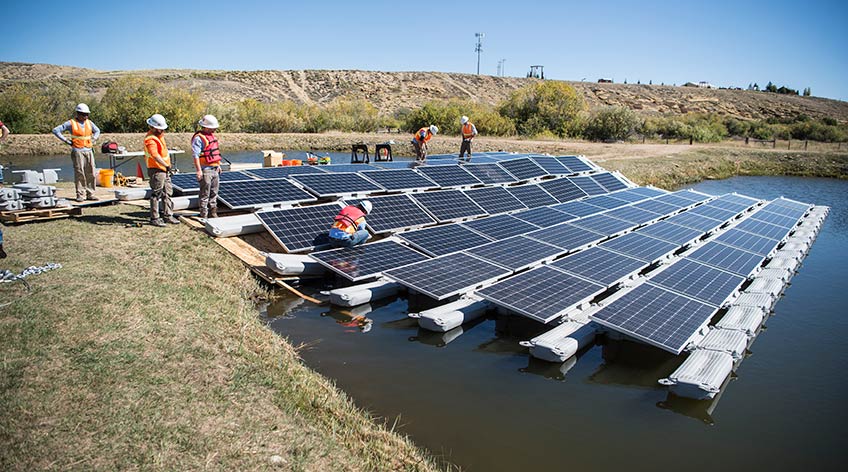A Mid-Hudson Bridge was desperately needed, even begged for, in the early 20th century. But it took 10 years to get built — and almost failed entirely when 20,000 tons of steel and concrete nearly sank.
The Poughkeepsie-Highland Railroad Bridge, finished in 1889, had opened up new avenues of commerce and travel across the Hudson River. But as the automobile became more popular, and passenger train runs decreased, local options for crossing the Hudson felt increasingly limiting. Ferries ran between Poughkeepsie and the town of Lloyd when weather allowed, and pedestrians, horse-drawn carts and sleighs, and even cars could cross the ice-covered river during winter. But in any season, weather made over-water crossings iffy.
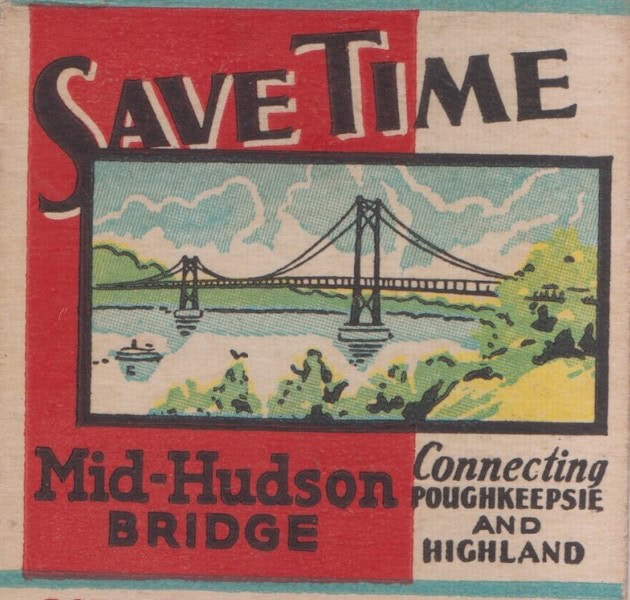
By 1920, the public outcry for both auto and walking access across the Hudson in the middle of the valley could not be ignored. Studies were done on whether another lane or a lower level could be added to the railroad bridge, but tacking on more platforms or weight to the structure was shown to to be cost-prohibitive and dangerous.
A grassroots movement to build a separate bridge took hold, with community leaders in Poughkeepsie and Lloyd petitioning for the construction of a new multi-use bridge nearby. Service groups, religious congregations, and the local media took up the cause, and by 1922 the Hudson Valley Bridge Association was formed to petition New York State for a new crossing. Ongoing support for a separate bridge over what he lauded as “the most glorious river in the world” came from then vice-presidential candidate Franklin D. Roosevelt, who would continue to promote the project.
The state legislature approved plans for a new crossing just south of the railroad bridge and hired engineer Ralph Modjeski and bridge foundation expert Daniel E. Moran. Having worked on the Poughkeepsie-Highland Railroad Bridge, Modjeski was already familiar with the challenges presented by the Hudson River. By 1924, the legislature accepted Modjeski and Moran’s plans for a two-pier suspension bridge between the Town of Lloyd and the City of Poughkeepsie, and on Oct. 9, 1925, Gov. Alfred E. Smith laid the cornerstone for what would become the Mid-Hudson Bridge.
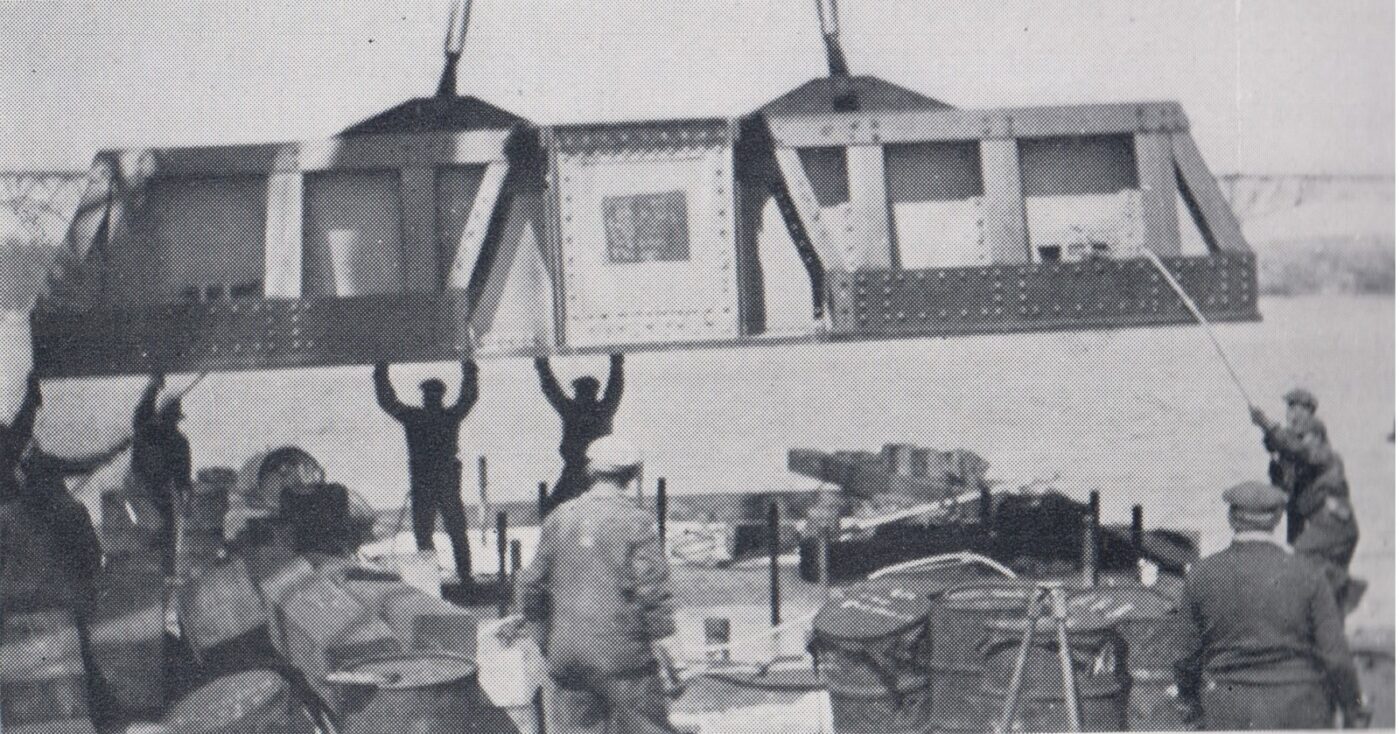
Work began on the shore approaches, while open-pier caissons (watertight retaining structures used for working on bridge piers) were constructed offsite in Staten Island and then towed up the Hudson. The two massive caissons, the largest ever used at the time, were sunk to the river bottom. Workers would enter a pressurized cavity and remove river bottom debris with shovels, pickaxes, and buckets threaded through the caissons — a method that was both expensive and extremely dangerous.
Despite the challenges, work stayed on schedule until the early morning hours of July 27, 1927, when the entire project was almost derailed. The eastern caisson began sinking. One side dropped nearly 30 feet. The structure began to lean over at a nearly 43-degree angle. Local newspaper reports predicted doom, saying that the nearly 20,000 tons of sinking steel and concrete would tank the project.
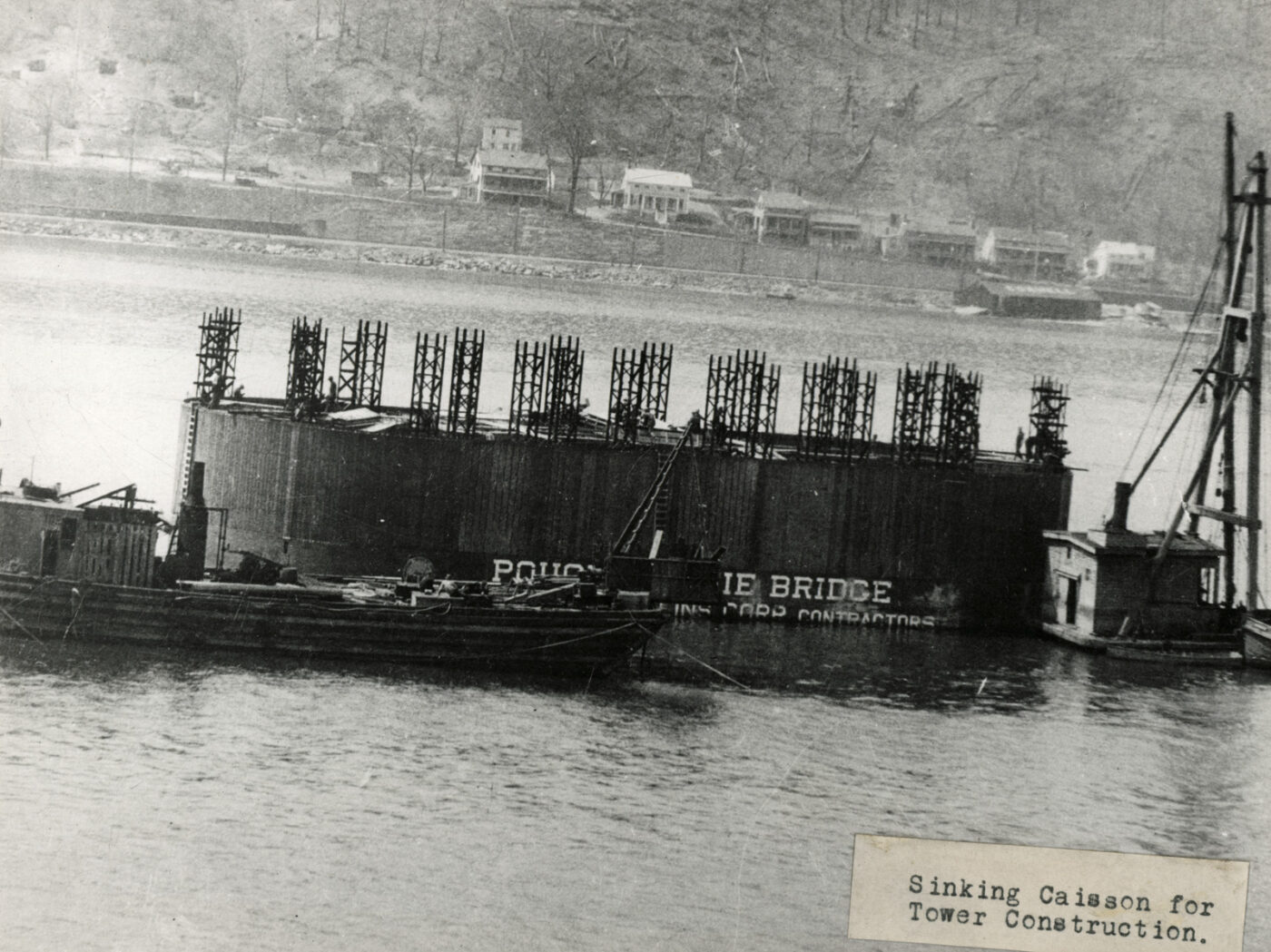
In the months to follow, try after try was made made to right the caisson. Anchors, pontoons, dredging, and gravel banking prevented further sinking until a solution could be devised. A system of pulleys and cables attached by divers eventually proved successful, although it had to be coordinated with river tides. In March 1929, building finally resumed.
Despite the Great Depression, which began with the stock market crash later that year, the bridge was finished within 18 months of restarting. Its concrete-filled caissons ultimately stood 136 feet long and 60 feet wide, supporting distinctive steel towers rising 315 feet above the water. The new 3,000-foot-long parallel wire suspension bridge across the Hudson River — one of the longest suspension bridges in North America — was ready to open just a little over a year after what had seemed like certain disaster.
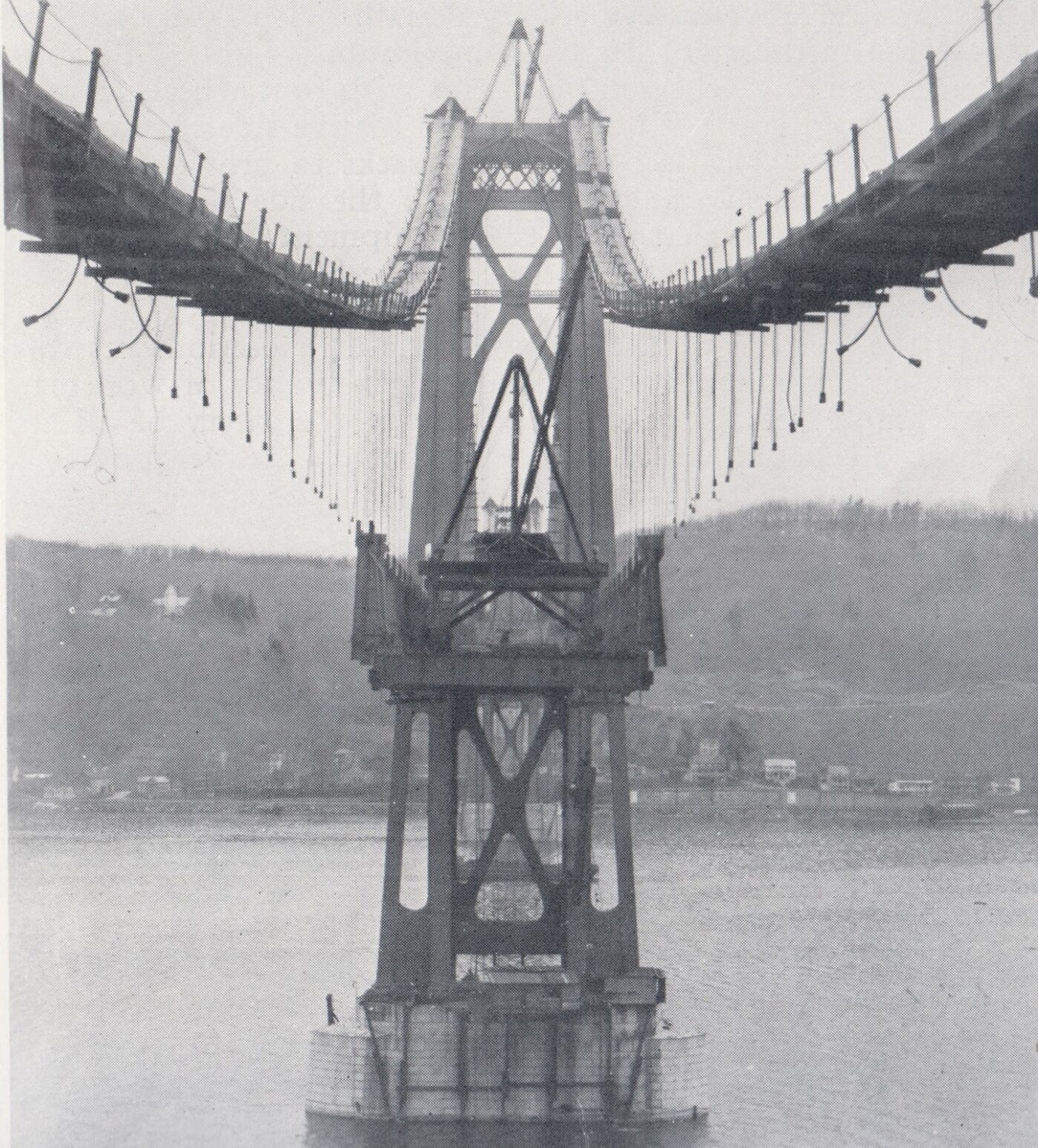
The Mid-Hudson Bridge, run by the New York State Department of Public Works, opened on Aug. 25, 1930. Franklin Roosevelt, by then governor of New York, arrived by car from Hyde Park, while Smith sailed up the Hudson by yacht. First Lady Eleanor Roosevelt and former First Lady Catherine Smith presided over ribbon cuttings on the western and eastern approaches, respectively. A procession of pedestrians then gathered at the center of the bridge, where representatives from Poughkeepsie and Lloyd met before declaring the bridge open to vehicle traffic. Nearly 12,000 automobiles and 30,000 pedestrians crossed the bridge for free that first day.
The New York State Bridge Authority was established two years later. By 1933 it had purchased the Mid-Hudson Bridge from the state, the first of the five Hudson Valley bridges the organization would eventually own and operate.
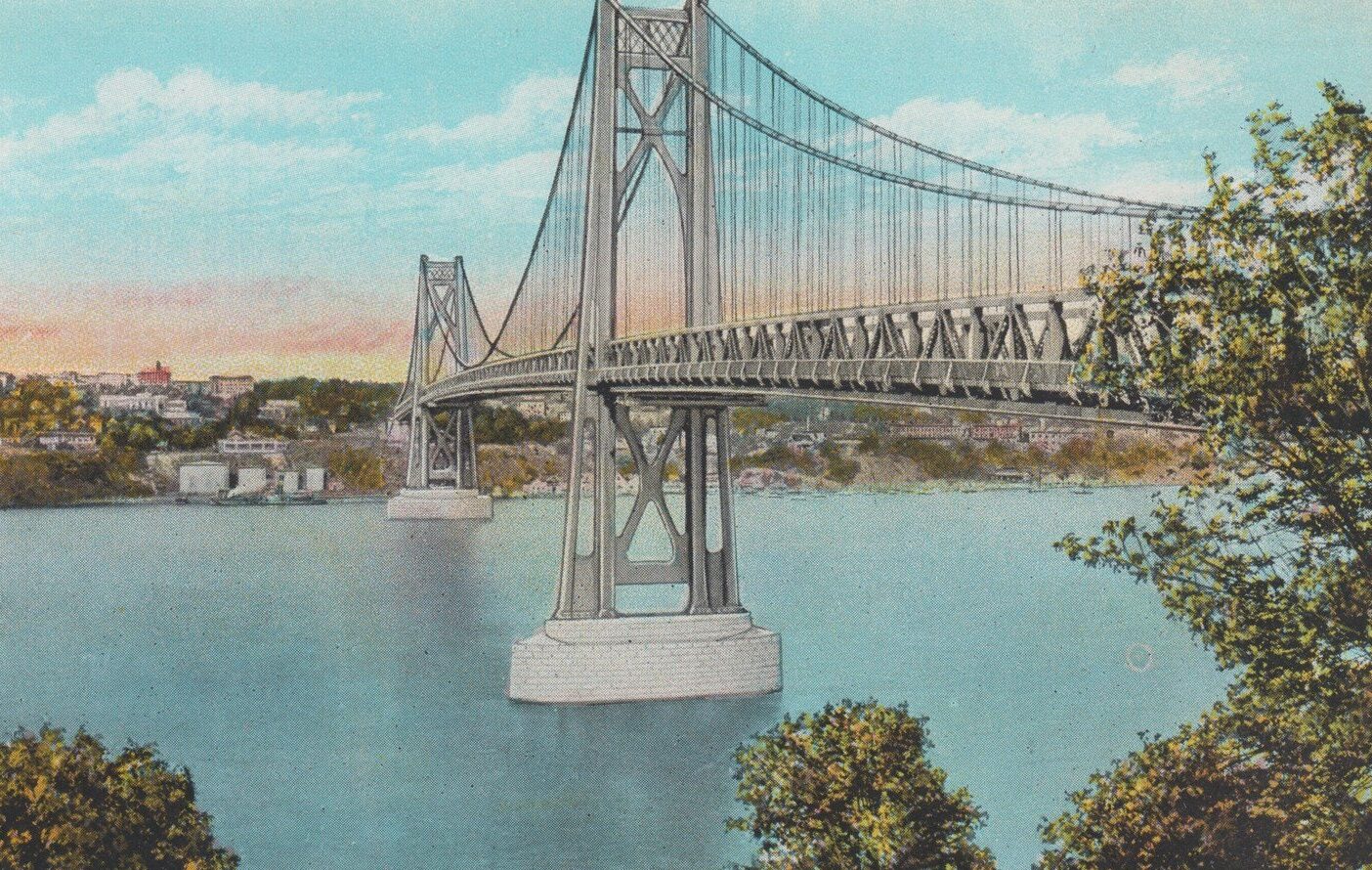
As the Mid-Hudson Bridge enters its 95th year, links to its early history are evident. The pedestrian crossing that afforded long-ago travelers a way to walk from one shore to another is now part of the Walkway Loop Trail, connecting it to the former railroad bridge (now the Walkway Over The Hudson State Historic Park). It has been designated the Franklin D. Roosevelt Mid-Hudson Bridge, in honor of one of the earliest advocates of an automobile crossing in the region.
And though more than 40,000 vehicles cross the bridge daily between Dutchess County and Ulster County, the vast majority of those trips remain to destinations within the Hudson Valley. That has made it what the New York State Bridge Authority once called “the most thoroughly local traffic crossing of the authority’s five bridges” — a fitting tribute to its origins as a project brought to life by the local community.


